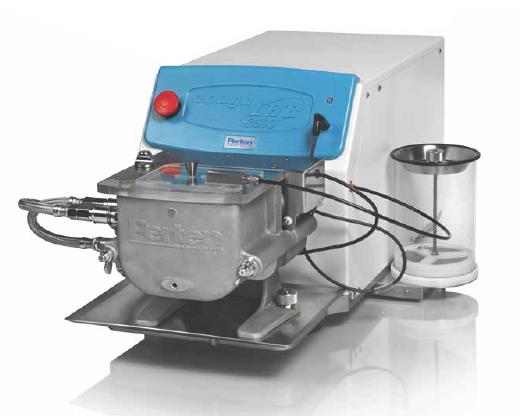
doughLAB
The doughLAB is a flexible dough rheometer with conventional z-arm mixing action.
It has programmable temperature and mixing energy to mimic commercial processes, evaluate finished dough performance, research the response of a dough to changing stress, evaluate ingredients and full formulations and perform standardized methods for water absorption and flour quality.
Determine dough mixing profile, development time, stability, softening and other quality parameters of wheat, rye and durum doughs for milling, baking, and food applications. Test flour, wholemeal, semolina and formulations containing ingredients and improvers. Create custom tests for bread, pizza crust, pastry, cookie, cracker, pasta and noodle doughs.
The doughLAB includes user-friendly Windows software with traceable calibration for millers, bakers and researchers.
Features and benefits
doughLAB:
Variable Speed & Temperature:To study dough performance during heating, cooling and gelling/cooking. Variable speed mixing to study stiff and crumbly doughs, novel formulations, evaluate dough response to changing stress and mimic commercial mixing.
Fast: High-energy mixing for high-throughput testing.
Automated: Integrated bowl temperature control system. Integrated, automatic water dispensing with “drip” function for repeatable, operator independent measurement of water absorption.
Easy Clean Up: Bowl disassembles quickly for easy cleaning to increase sample throughput.
doughLAB for Windows
(DLW) Software:
Calibration: Traceable software calibration procedure.
User Friendly: Methods included in the software library. Easy to use “routine user” mode. Software password protection.
Programmable Instrument Control: “Profile” style method set up with advanced options and for flexibility and ease of use.
Flexible Data Analysis: Auto functions for commonly derived parameters and advanced functions for research.
Real Time Graph Display: Interactive and overlay functions for clarity.
Single Page Report: Traceability data, results and the graph all on a single page.
Traceability: complies with ER/ES (electronic records/electronic signatures) requirements for data security.
Virtual blending: View, chart, average, and analyse data to predict the performance of flour blends.
Operation and handling
The doughLAB is a conventional sigma arm dough mixer which measures water absorption (WA) and dough mixing parameters. The doughLAB incorporates programmable mixing speed and temperature, integrated water dispensing, Windows software to control both testing and analysis, and traceable calibration.
Open the appropriate doughLAB method in DLW software and enter sample information. Accurately weigh the amount of flour calculated for you.
Open the lid of the mixing bowl and dispense the flour into the bowl. Close the safety lid. Place the water dispensing head in the bowl lid. Start the test.
If necessary scrape down the sides of the bowl carefully to integrate the dough, using the plastic spatula provided.
Secure the evaporation shield to minimise evaporation of water. The resistance of the dough will be graphed on the monitor.
Applications
Wheat flour doughs are nonlinear viscoelastic materials, and as such there is a complicated relationship between the strains imparted during mixing (stretching, shearing, compression and relaxation) and dough resistance. A number of factors related to processing conditions and flour type will also have a large effect on how the dough behaves. Variations in water and protein content, changes in the fibrillar structure of the protein, starch, starch damage, pentosans, gluten strength and the actions of enzymes on the dough components all affect dough behaviour. Due to the complex nature of dough behaviour an empirical instrument test is desirable.
The two key pieces of information required by millers and bakers are the absorption (amount of water required for a dough to reach a definite consistency) and the mixing profile of the dough (development time, stability and softening) which are indicative of the suitability of the flour for different applications. Other parameters may also be measured.
doughLAB information will be useful to:
•Milling, baking (bread, cake, pastry, biscuit), pasta and Asian products (eg steam bread, noodles and flat bread) laboratories who need to test wheat flour quality and processing characteristics.
•Specific applications include the study of gluten and carbohydrate functionality, enzyme activities in flour, functions and effects of dough ingredients (dried dairy ingredients, organic acids, salt, emulsifiers, antioxidants, yeast , sugar, improvers and enzymes), properties of composite flours, effects of special flour treatments and emulation of commercial processes.
•There are also applications for the testing of cereal grains other than wheat such as rye, triticale and durum. doughLAB can be used to study the mixing characteristics of vital gluten which is added when the flour has insufficient quantity or quality of gluten and is often used in specialty breads (eg those made with rice flour), bread manufactured at high altitude and for many brown and grain breads.
|





